If you are looking into buying a pinhole camera, this post will share my experience with you. I have used a lot of cameras and built a lot of cameras. I’ve never found a perfect pinhole camera. They all have their quirks; they all can be a lot of fun.
I plan on updating this page over time and adding new info as I discover new things.
I offer a pinhole photography workshop that you can use and try out a lot of this equipment for yourself.
Pinhole Cameras
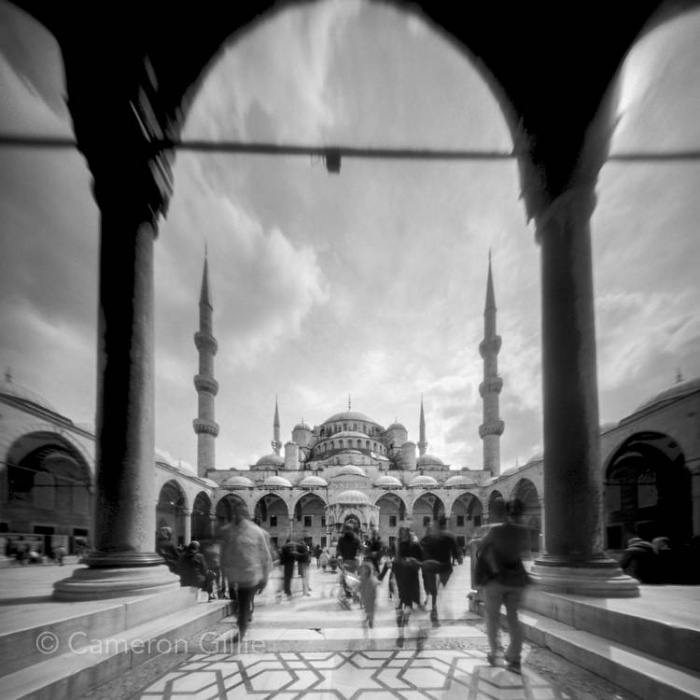
RealitySosubtle 6×6– Probably my favorite pinhole camera. I really love it. It’s super-wide-angle and has two pinholes you can choose from, one for a “rise” perspective and one normal perspective. A guy in France @realitysosubtle makes them. It’s solidly built and small. I’ve taken one backpacking, and I didn’t worry at all about damaging it. It’s so thin. You can always slide it in a camera bag with your other cameras. While putting this blog post together, I grabbed random pinhole photos I liked and realized that they are almost all taken with a RealitySoSubtle 6×6. I guess that is a pretty good endorsement of this camera. Its extreme wide-angle view is what makes it a great pinhole camera.
Lithuanian eBay seller tinastrutis– I really like this guy’s pinhole cameras. He’s an honest eBay seller and has some innovative and fun pinhole cameras he makes from old Agfa and Russian cameras. You have to be patient with shipping, especially now with COVID. It can take a month or more to receive packages from Eastern Europe. But they are a lot of fun and worth the wait. I highly recommend his cameras.
Buying wood pinhole cameras
Zero Image 2000– Certainly one of the prettiest and well-made pinhole cameras out there. It’s made of teak and brass. The only thing I don’t like about then is I wish it were more wide-angle. It’s pretty wide, but I like super-wide. Also, I wish they came with the angle of view inscribed on the body to help you compose. I painted my own angle of view lines on mine. I suggest getting the “back to nature” version of the camera. It’s not only cheaper because it’s not varnished. I think it’s actually nicer looking.
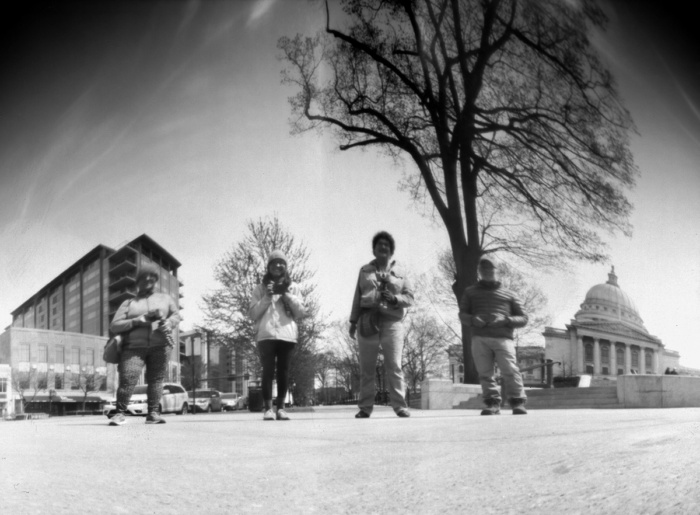
Ondu pinhole cameras– They are stunning-looking cameras. I had one, and I sold it, which I regret doing. They are held together with magnets, and the shutter is held in place by magnets which is pretty innovative. I remember the only negative thing about the camera I had was there was considerable camera shake opening and closing the shutter because it was sticky. But maybe that was just a flaw of the camera I had? I need to give them another try.
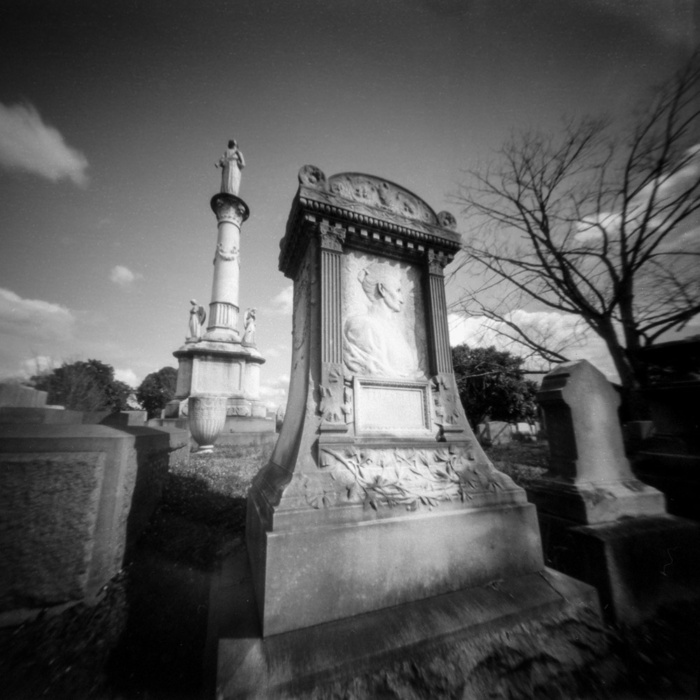
Buying pinhole plastic toy cameras
Holga pinhole- They are no longer made, so you will have to search eBay for one. Also, they don’t work very well without the Holga cable release attachment, which is no longer made. Because they are hard to find, the camera and cable release tend to be pretty expensive for a plastic camera. But if you are patient and watch eBay, you might find a reasonable one.
Holga wide Pinhole- Kind of a fun panoramic pinhole camera. Again, no longer made. This one comes with a built-in cable release. But I do love the panoramic look of these.
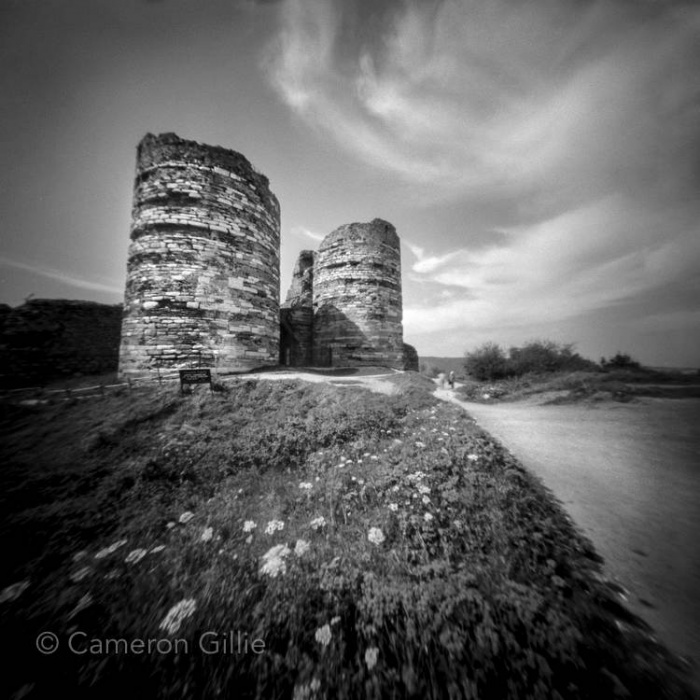
Lomography Diana F– The Diana is a legendary toy plastic camera that Lomography still makes. They are fun because they are a pinhole and a regular toy camera all in one. You can take the lens off mid-roll and shoot it as a pinhole. So it’s versatile. But it’s a plastic toy camera and therefore has all the quirks that come with that. Don’t buy an overpriced new one from the Lomography store. There are plenty of used ones on eBay for a fraction of the price. Make sure you get the newer Lomography Diana F+ model. The older vintage Diana cameras from the 1960s don’t have the pinhole option. Also, a 60-year-old plastic camera will rarely still work properly anymore. The new Lomography models all seem to function pretty well.
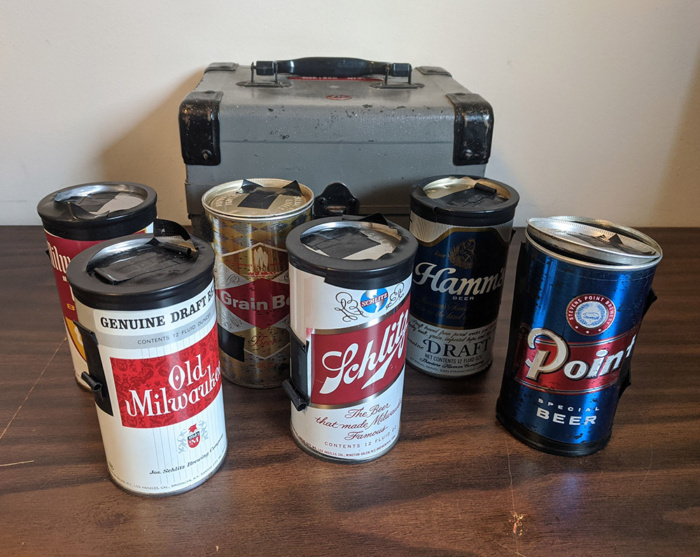
Making your own cameras
Pinhole Billy in Door County is a friend and longtime pinhole photographer (as well as quite a character). He makes all of my pinhole apertures in my homemade cameras. They are top-notch stainless steel pinholes. You can email him, and he’ll take care of what you need. A good place to start is to order one of his “sets” of pinholes in different sizes.
A clean edge can opener is good for converting an old beer can or any other can into a pinhole camera. It removes the top of the can without making any sharp edges. It just breaks the seal in the top of the can, so it’s easy to tape the top back on with a light-tight seal with black electrical tape time after time. A tip I can give you in choosing a can for making a pinhole camera. Get one with strong and straight sidewalls. Most modern soup cans have rippled sidewalls which make taping in the pinhole difficult with a light-tight seal. Modern beer and soda cans are way too flimsy, so vintage beer and soda cans work much better. You can find them in almost any antique store.
Accessories
Joby Tripods are my favorite tripod for pinhole photography. They get you low to the ground for a good pinhole perspective and are easy to carry around and use. The Joby I supply my workshop students with is the 3K model.
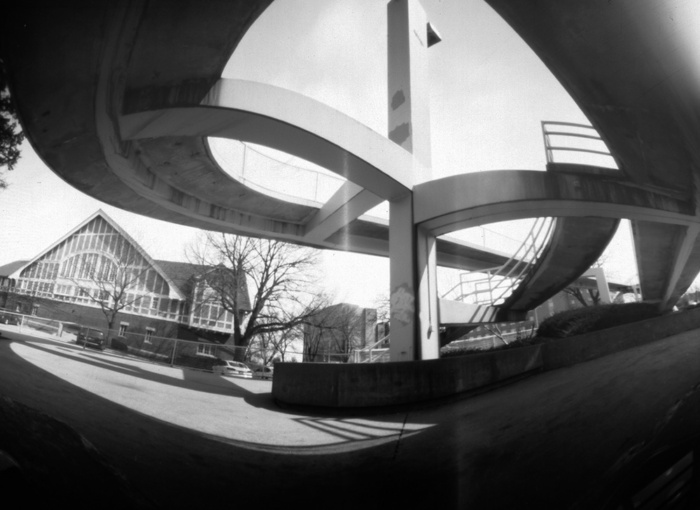
Arista black and white photo paper is something I discovered recently. It’s great for homemade pinhole camera paper negatives. It’s sold by Freestyle Photo, which is also an awesome place to get all your film and chemistry. They have everything film-related you can imagine and then some. Multi-grade photo papers are much harder to work with, and you will get inconsistent results. Get the #2 graded resin-coated Arista paper. It makes good paper negatives and is much less expensive than large format sheet film I have been using in the past. I plan on using this paper and experimenting a lot more.
Negative Lab Pro is the Lightroom plugin that I use to scan negatives. It’s much faster than scanning with a flatbed Epson scanner, and I think it also has much better tonal qualities than an Epson. It’s an awesome and fast way to scan negatives—especially 35mm and 120 film. You photograph your negatives on a light table with a digital camera and then import them into Lightroom and let Negative Lab Pro do its magic.
